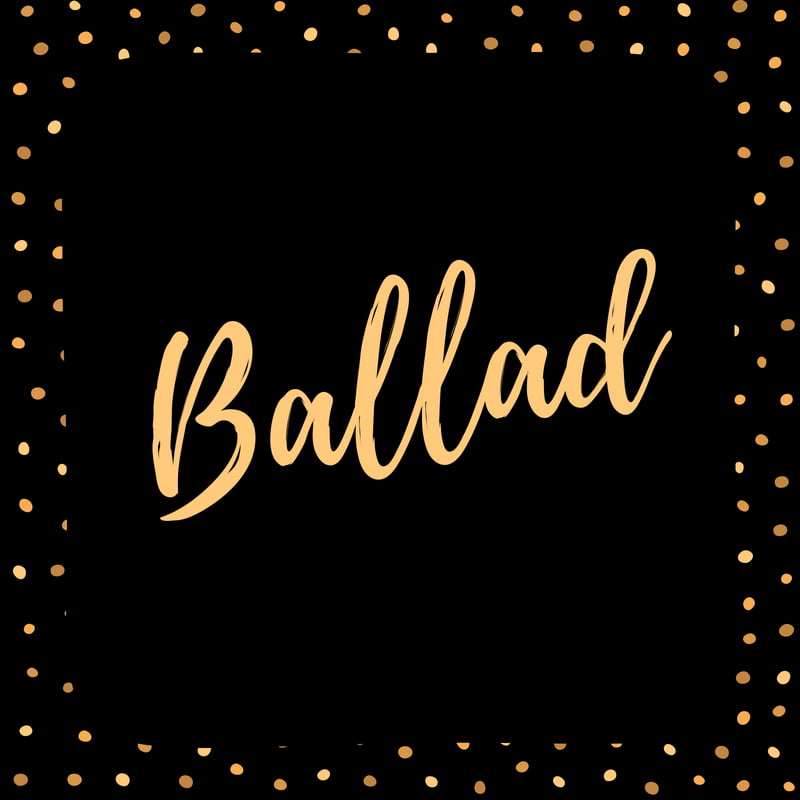
Ballad is an old English pattern of story meant for
singing which is full of anecdotes conserve by memory and handed down orally. A
ballad is a form of verse, often a narrative set to music. The term derives its
name from medieval French dance songs or “Ballares”.
In theme and functions they may originate from Scandinavian and Germanic
tradition of story-telling that can be seen in poems such as Beowulf.
singing which is full of anecdotes conserve by memory and handed down orally. A
ballad is a form of verse, often a narrative set to music. The term derives its
name from medieval French dance songs or “Ballares”.
In theme and functions they may originate from Scandinavian and Germanic
tradition of story-telling that can be seen in poems such as Beowulf.
The
Characteristics of Ballad:
Characteristics of Ballad:
I.
A
song that tells a story.
II.
It
is verbally transmitted.
III.
It
concentrates on single episodes.
IV.
It
deals with material or universal appeal.
V.
It
contains four lines stanzas with ballad metre. First and third lines are iambic
tetra metre. Second and fourth lines are iambic tri metre. The rhyme pattern is
‘abcb’
It
contains four lines stanzas with ballad metre. First and third lines are iambic
tetra metre. Second and fourth lines are iambic tri metre. The rhyme pattern is
‘abcb’
VI.
It
lacks superfluous details.
VII.
It
has abrupt ending.
Examples
of Ballad:
of Ballad:
a)
John
Keats’ poem “La Belle Dame sans Mercy”
John
Keats’ poem “La Belle Dame sans Mercy”
b)
“The Rime of the Ancient Mariners” by S. T. Coleridge:
“The Rime of the Ancient Mariners” by S. T. Coleridge:
“I looked upon the rotting sea
And drew my
eyes away
eyes away
I looked upon the rotting deck
And the dead
man lay.”
man lay.”
Classification
of Ballad:
of Ballad:
1.
Broadside
Ballad
Broadside
Ballad
2.
Literary
Ballad
Literary
Ballad
3.
Folk
Ballad
Folk
Ballad
4. Ballad of the Knightly Romances
~~~~~*~~~~~